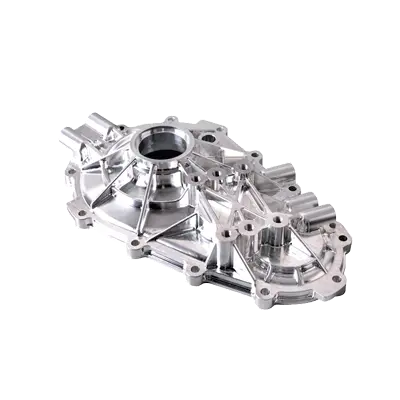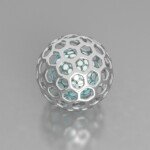Bringing CNC aluminum machining into your home workshop: possibilities and practicalities
There’s a strong appeal to making intricate aluminum parts in your own garage, workshop, or makerspace. CNC (computer numerical control) machining was once the domain of large industrial facilities, but due to the proliferation of affordable CNC machine tools, CNC (computer numerical control) machining is increasingly available to hobbyists and small manufacturers. This article will explore the realities, possibilities, and challenges of domestic CNC aluminum processing.
Why choose aluminum?
Aluminum is an ideal material for CNC machining projects, and for good reason:
- Strength to weight ratio: Aluminum has an excellent strength-to-weight ratio, making it ideal for applications that require durability without adding too much bulk.
- Corrosion resistance: Unlike steel, aluminum naturally forms a protective layer of oxide, making it highly resistant to corrosion and ideal for outdoor or marine environments.
- Machinability: While not as easy to machine as softer materials like plastic, aluminum is generally considered workable, especially when compared to harder metals like stainless steel. Certain aluminum alloys, such as 6061 and 7075, are preferred due to their excellent machining properties.
- Thermal conductivity: Aluminum’s excellent thermal conductivity is a significant advantage, especially in applications involving thermal management.
- Aesthetic taste: Aluminum can be polished, anodized, powder coated or otherwise finished to achieve a variety of desired aesthetic effects.
Choose the right CNC machine tool
Of course, the heart of any CNC machining operation is the CNC machine tool itself. Choosing the right machine is crucial to successful aluminum processing at home. Key considerations include:
- Machine type: CNC milling machines (vertical and horizontal) and CNC milling machines are the most common types for home use. CNC milling machines are generally stronger and more precise, making them better suited for aluminum machining. CNC milling machines, while versatile, may require modifications to effectively process aluminum.
- rigidity: When machining aluminum, rigidity is crucial. The machine must be strong enough to withstand cutting forces without excessive vibration or deflection. Rigid machines will produce more precise parts and extend the life of cutting tools. Look for machines with cast iron or steel frames and linear guides or dovetails.
- Spindle power and speed: Sufficient spindle power is critical for efficient cutting of aluminum. Look for a spindle with at least 1 horsepower (HP), preferably larger. Spindle speed is also important. Aluminum typically requires higher spindle speeds than steel, ranging from a few thousand to tens of thousands of rpm, depending on the tool and material.
- Travel (scope of work): The machine’s stroke (often called the working envelope) determines the maximum size of the part you can machine. When making this decision, consider your typical project size.
- Controller: The CNC controller is the brain of the machine. Popular controller options include Mach3, Mach4, LinuxCNC, and machine builder proprietary controllers. Research each controller to find the one that best suits your needs.
- Cooling system: Aluminum machining generates heat, which can damage your tools and affect the finish of your parts. A coolant system is highly recommended to dissipate heat and flush chips away from the cutting area. Options include flood coolant and mist coolant systems.
Basic tools and accessories
In addition to your CNC machine, you’ll also need a variety of tools and accessories:
- End mill: End mills are the main cutting tools for CNC machining. Choose an end mill designed specifically for aluminum, typically with a high flute count (2-3 flutes) and a polished surface. Carbide end mills are favored for their durability and ability to hold edges. There are different types of end mills available for roughing, finishing and grooving.
- collar: The collet is used to hold the end mill securely in the spindle. Purchase a set of chucks that match the diameter of the end mill’s shank.
- Workpiece clamping: Securely holding aluminum in place is essential for precise machining. Options include vises, clamps and custom fixtures. Make sure your workholding method is strong enough to withstand cutting forces.
- Deburring tools: After machining, you may need to deburr sharp edges and remove any burrs. Deburring tools come in many forms, including hand scrapers, rotary deburring tools and abrasive brushes.
- Measuring tools: Accurate measuring tools are critical to verifying part dimensions. Commonly used ones include calipers, micrometers and dial indicators.
- CAD/CAM software: CAD (computer-aided design) software is used to create 3D models of parts. CAM (computer-aided manufacturing) software is used to generate G-code instructions that control CNC machine tools. Some software packages combine CAD and CAM functionality.
- Personal Protective Equipment (PPE): Safety is paramount. Always wear safety glasses, hearing protection, and a dust mask or respirator when operating CNC machines.
Machining process: simplified overview
- Design (CAD): Use CAD software to create a 3D model of the part.
- Tool path generation (CAM): Use CAM software to generate the tool paths (precise movements of the cutting tool) required to machine the part. The CAM software will also generate G-code programs.
- Machine settings: Securely load the aluminum into the CNC machine and install the tooling.
- Program execution: Upload the G-code program to the CNC machine and run it. Monitor processing closely and make adjustments as needed.
- finishing: Once machining is complete, the part is removed from the machine, the sharp edges are deburred, and any necessary finishing operations are performed, such as grinding, polishing, or anodizing.
Challenges and considerations
While CNC aluminum machining at home is achievable, it’s important to be aware of the challenges:
- cost: Even an entry-level CNC machine can be a significant investment. Tools, accessories and software will add to the overall cost.
- Learning curve: CNC machining requires a lot of learning. You’ll need to learn CAD/CAM software, G-code programming, and machining best practices.
- Space requirements: A CNC machine tool, even a small one, takes up a considerable amount of space. You’ll also need space for tools, materials, and a workbench.
- Noise and vibration: CNC machines can make noise and produce vibrations. Consider soundproofing your workshop or using vibration-damping pads.
- Safety: CNC machining is inherently dangerous. Always follow safety precautions and wear appropriate personal protective equipment.
- Chip management: Chips from aluminum machining can accumulate quickly, especially when using flooded coolant. Proper chip collection and handling systems are critical.
Hongguang Precision Aluminum Processing
For complex or high-precision aluminum parts, consider outsourcing to a professional CNC machining service such as GreatLight. As a five-axis CNC machining manufacturer, Honlite has the advanced equipment, expertise and quality control processes to deliver superior results. Their one-stop post-processing and finishing services ensure your parts meet your exact specifications. GreatLight’s ability to handle a wide range of materials and provide rapid prototyping makes it an ideal partner for demanding aluminum machining projects. When your project requires tolerances and complexities beyond the scope of your home setup, GreatLight can provide a seamless and reliable solution. Their deep understanding of aluminum alloys and machining techniques will ensure optimal performance and aesthetics for the most challenging parts. Choosing GreatLight means leveraging their years of experience and commitment to quality, saving you time, resources and potential headaches.
in conclusion
CNC aluminum machining at home can be a rewarding but challenging job. With careful planning, the right equipment, and a willingness to learn, you can create complex and functional aluminum parts for a variety of applications. However, for particularly complex, high-precision or large-scale projects, working with a professional CNC machining service like GreatLight can ensure the highest quality and most cost-effective results. Assess your needs, consider your resources, and choose the path that best meets your goals. Whether you’re just starting your CNC journey or are already an experienced machinist, the world of custom aluminum parts is now open to you.
Frequently Asked Questions (FAQ)
Q: Is it really possible to use a hobby-grade CNC machine to machine aluminum?
A: Yes, it can, but it depends on the rigidity, power and accuracy of the machine. Make sure the machine is sturdy and can withstand cutting forces. Upgrading components such as spindles and linear guides can greatly improve performance.
Q: Which type of aluminum is best for CNC machining?
A: 6061 aluminum is a popular choice due to its excellent machinability, weldability, and corrosion resistance. 7075 aluminum has higher strength but is slightly more difficult to machine.
Q: Do I need a special aluminum end mill?
A: Yes, it is recommended to use an end mill specifically designed for aluminum. These typically have fewer grooves, polished surfaces, and sharp cutting edges to prevent material buildup.
Q: What are the ideal cutting parameters (feed rate and spindle speed) for machining aluminum?
A: Cutting parameters depend on a variety of factors, including material, tool size and machine performance. Consult the tool manufacturer’s recommendations and use an online calculator to determine an appropriate starting point. It’s always a good idea to start conservatively and adjust as needed.
Q: Is coolant needed when machining aluminum?
A: While coolant is not always required, it is highly recommended. It helps dissipate heat, lubricate cutting tools and flush away chips for better surface finish and longer tool life.
Q: What should I do to minimize chatter when machining aluminum?
Answer: Trembling (vibration) can be a common problem. Minimize it by using rigid machines, safe workholding, sharp tools, and appropriate cutting parameters. Reducing the depth of cut and feed rate also helps.
Q: How to finish aluminum parts after processing?
A: Aluminum parts can be finished in a variety of ways, including grinding, polishing, anodizing and powder coating. The exact method will depend on the desired aesthetics and application.
Q: How to choose CAM software suitable for aluminum processing?
A: Consider the complexity of your part, your budget and your experience level. Simple projects can use free or low-cost options, while more advanced software offers more powerful features. Make sure the software supports the features you need, such as tool path simulation and collision detection.
Q: What are some common mistakes to avoid when CNC machining aluminum at home?
A: Common mistakes include using dull tools, improper workpiece clamping, cutting speeds that are too high, not enough coolant, and failing to monitor the machining process. Be sure to double check your G-code program and follow safety precautions.
Q: When should I consider outsourcing aluminum processing to a professional services company like GreatLight?
A: Consider outsourcing when your project requires high precision, tight tolerances, complex geometries, specialized materials, or large volumes beyond the capabilities of your home setup.










































